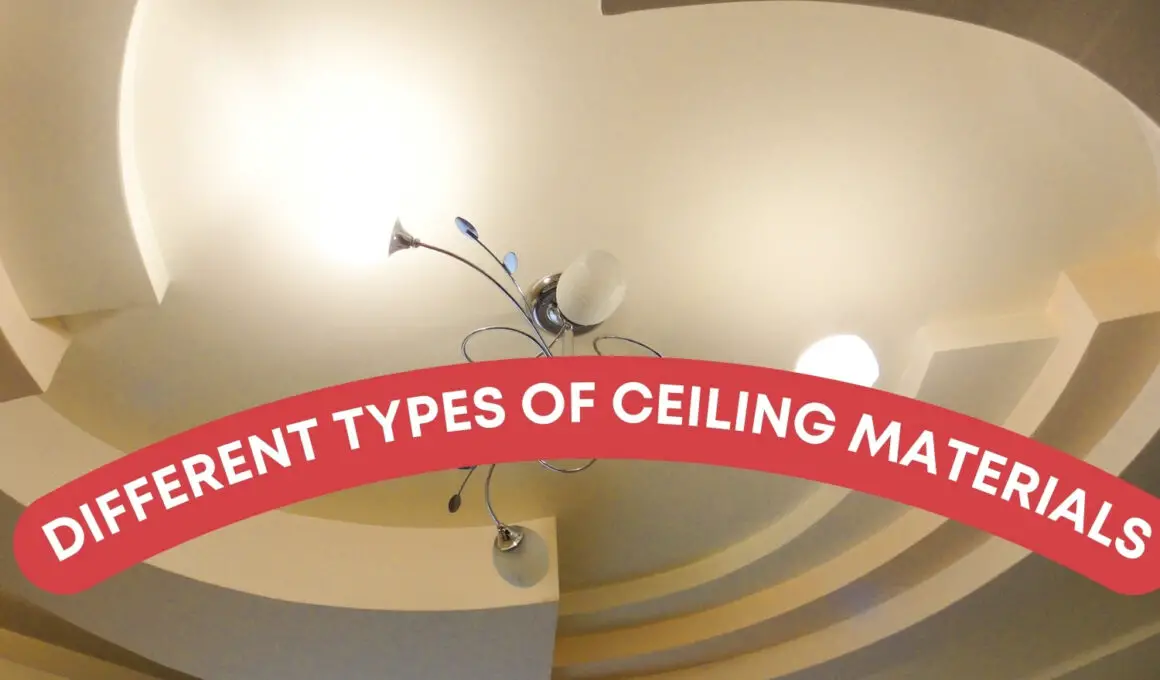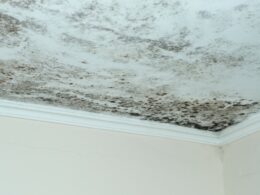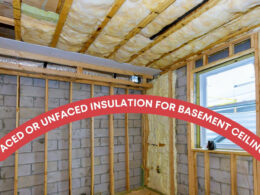Table of Contents Show
As a seasoned homeowner and professional contractor, I’ve had the privilege of transforming numerous homes into spaces of comfort and style. One aspect that often goes unnoticed but plays a crucial role in the overall ambiance of a room is the ceiling.
The right ceiling material can not only enhance the aesthetic appeal of your home but also provide functional benefits like insulation and soundproofing.
In this article, we’re going to explore nine different types of ceiling materials. From the classic elegance of wooden ceilings to the modern sophistication of metal panels, each material offers unique advantages.
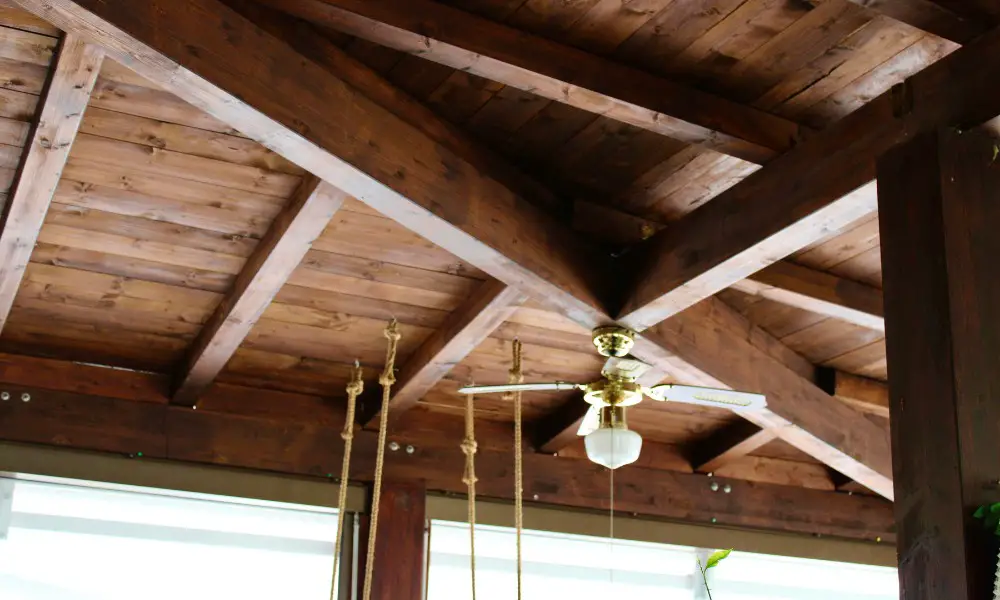
Types of Ceiling Materials
Here are the 7 ceiling materials that you can commonly find;
1. Wooden Ceilings
Aesthetic Appeal
Wooden ceilings are renowned for their natural beauty and warmth. They add a timeless elegance to any room, creating a cozy and inviting atmosphere. The unique grains and colors of wood bring a piece of nature indoors, enhancing the aesthetic appeal of the space.
Variety of Wood Types
There is a wide range of wood types available for ceiling applications, each with its distinct characteristics. Options range from classic choices like oak and pine to exotic varieties like teak and mahogany. This diversity allows homeowners to choose the perfect wood type that complements their interior design and personal style.
Maintenance Aspects
While wooden ceilings are durable, they do require some maintenance to retain their beauty. Periodic varnishing or sealing is necessary to protect the wood from moisture and wear. However, with proper care, wooden ceilings can last for decades, becoming more visually appealing as they age.
2. Drywall Ceilings
Cost-effectiveness
Drywall is an economical choice for ceilings. Its affordability makes it a go-to for both small-scale remodels and larger construction projects. By choosing drywall, homeowners can save on material costs without compromising on quality.
Ease of Installation
One of the most appealing aspects of drywall is its simplicity in installation. It can be quickly fitted onto ceiling frames, making it a practical choice for both professionals and DIY enthusiasts. This ease of handling and installation can also reduce labor costs.
Versatility
The drywall’s smooth surface is like a blank canvas. It can be painted, textured, or finished in various ways to match any interior design. Moreover, drywall can be cut and shaped to fit different ceiling designs, providing flexibility in architectural styling.
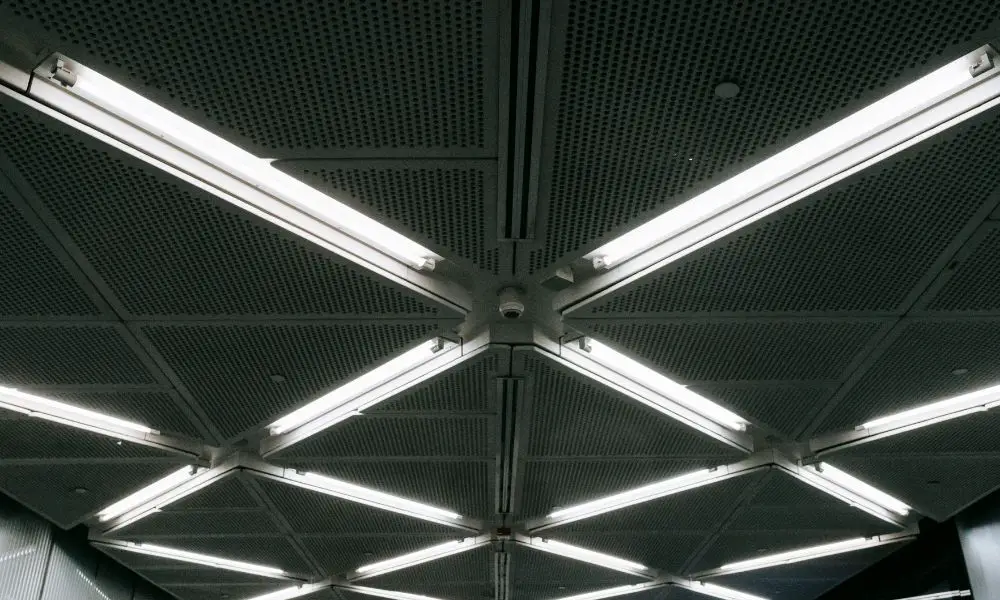
3. Metal Ceilings
Durability
Metal ceilings are highly durable and robust, making them a long-lasting option. They resist warping, cracking, and peeling, which is common in other materials. This durability ensures that metal ceilings maintain their integrity and appearance over time, even in challenging environments.
Modern Look
Metal ceilings offer a sleek and contemporary aesthetic. They are particularly favored in modern architectural designs for their ability to give spaces a clean and minimalist look. The reflective properties of metal can also enhance the brightness and spaciousness of a room.
Fire Resistance
One of the key advantages of metal ceilings is their fire-resistant quality. Metal is non-combustible, which adds an extra layer of safety in case of fire incidents. This feature makes metal ceilings an ideal choice for commercial spaces, industrial settings, and areas where fire safety is a priority.
4. Fiberboard Ceilings
Sound Absorption
Fiberboard ceilings are excellent for reducing noise, making them ideal for rooms where acoustics are a concern. Their sound-absorbing properties help to create a quieter and more comfortable indoor environment.
Affordability
Fiberboard is a cost-effective option for ceiling materials. Its affordability makes it a popular choice for both residential and commercial spaces, particularly for those on a tight budget.
Environmental Friendliness
Many fiberboard products are made from recycled materials, making them an environmentally friendly choice. This aspect appeals to those looking to make sustainable choices in their building or renovation projects.
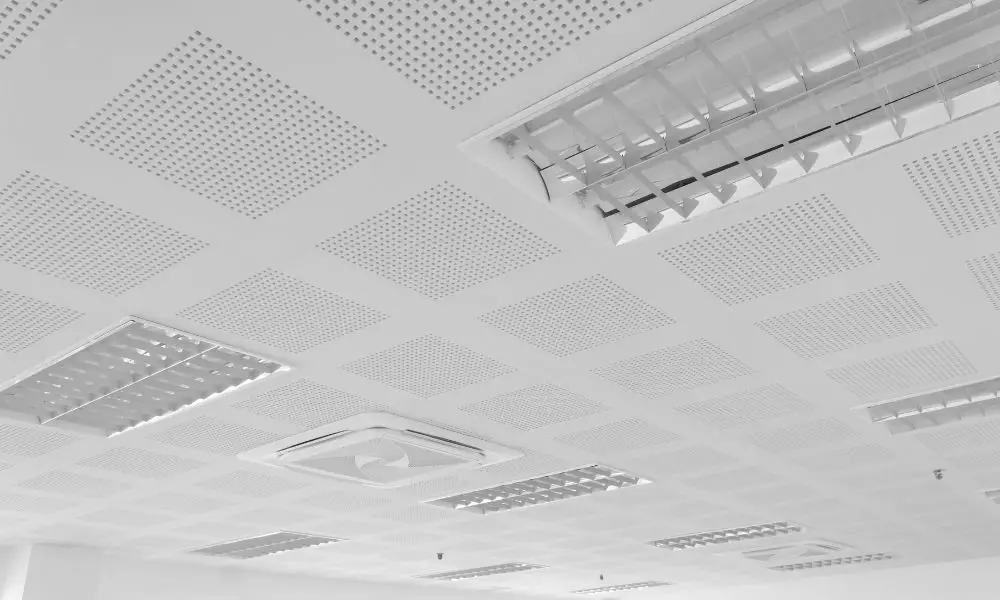
5. Acoustic Ceilings
Noise Reduction Capabilities
Acoustic ceilings are designed to significantly reduce ambient noise, making them perfect for environments where sound control is crucial. They absorb sound, preventing echoes and reducing noise levels, which enhances the overall acoustic quality of a space.
Ideal for Commercial Spaces
Due to their sound-dampening qualities, acoustic ceilings are particularly suited for commercial settings like offices, schools, restaurants, and healthcare facilities. They create a more focused and comfortable environment for both work and leisure activities.
6. PVC Ceiling
Water Resistance
PVC ceilings are highly resistant to water and humidity, making them ideal for damp environments like bathrooms and kitchens. Their moisture-resistant quality prevents mold and water damage.
Ease of Cleaning
PVC ceilings are known for their low maintenance. They are easy to clean and don’t require special products or treatments. A simple wipe-down is often enough to keep them looking fresh and new.
Variety of Designs
PVC ceilings come in a wide range of designs and colors. From plain to patterned finishes, they offer flexibility in styling, making it easy to match them with various interior decors.
7. Plaster of Paris (POP) Ceilings
Customizability
POP ceilings are highly customizable, allowing for a variety of shapes and designs. This adaptability makes it possible to create unique ceiling patterns and architectural features tailored to individual preferences.
Elegance
Plaster of Paris adds an element of elegance and sophistication to any room. Its smooth and refined texture contributes to a high-end, luxurious aesthetic.
Smooth Finish
POP provides a smooth and seamless finish, offering a sleek and polished look. This feature is particularly appealing for those seeking a flawless ceiling surface.
Considerations for Choosing Ceiling Materials
Here are the tips on factors to consider before choosing ceiling materials;
- Cost: The budget is a primary consideration. Different materials vary significantly in price, so it’s important to choose one that fits your financial plan without compromising on quality.
- Durability: The longevity of the ceiling material is crucial. Consider materials that offer resilience and long-term stability, especially in environments prone to wear and tear.
- Maintenance: Some ceiling materials require more upkeep than others. Evaluate how much time and effort you are willing to invest in maintenance to keep your ceiling looking its best.
- Aesthetic Appeal: The material should complement the overall design and ambiance of the space. Consider how the texture, color, and style of the ceiling will integrate with your interior design.
In summary, when selecting ceiling materials, balance cost, durability, maintenance needs, and aesthetic appeal to ensure a choice that is both practical and visually pleasing.






